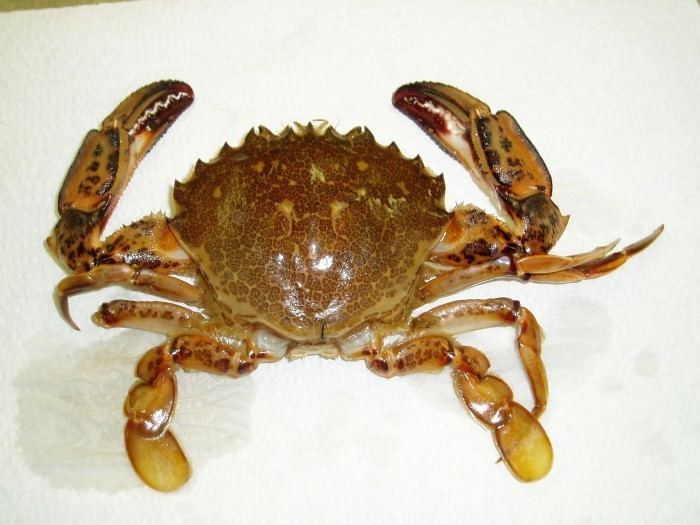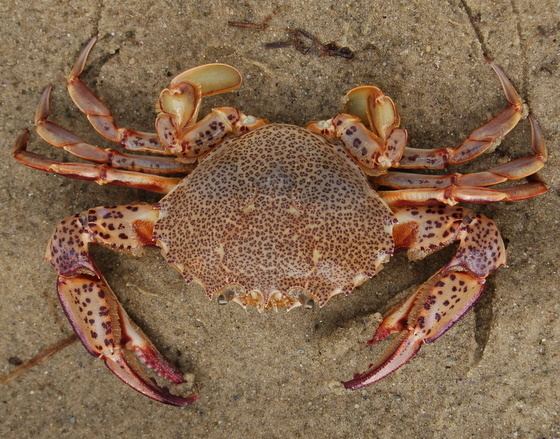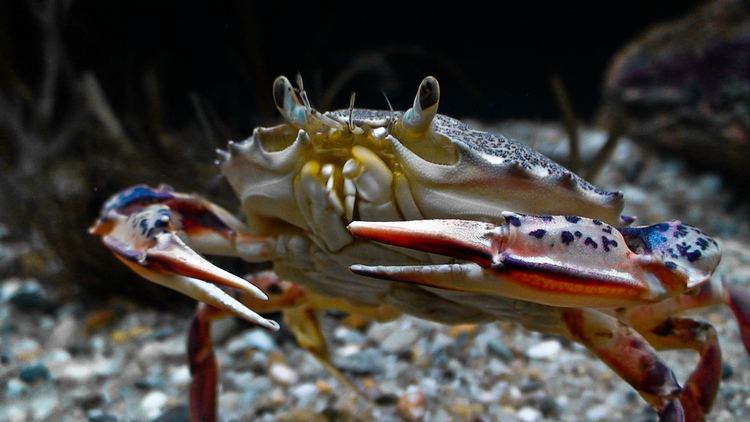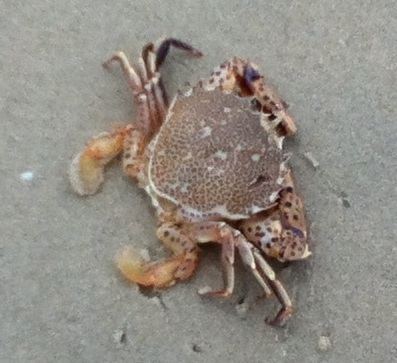Infraorder Brachyura Rank Species | Higher classification Ovalipes | |
 | ||
Similar Crab, Ovalipes, Crustacean, Decapoda, Portunidae | ||
Swimming crab motion study of lady crab ovalipes ocellatus 2
Ovalipes ocellatus is a species of crab from eastern North America, known as the lady crab, calico crab (not to be confused with Hepatus epheliticus) or ocellated crab. It has a shell 3 in (7.6 cm) long and only slightly wider, which is covered in clusters of purple spots. It occurs from Canada to Georgia, and lives mainly on molluscs, such as the Atlantic surf clam.
Contents
- Swimming crab motion study of lady crab ovalipes ocellatus 2
- Swimming crab motion study of lady crab ovalipes ocellatus
- Description
- Distribution
- Life cycle
- Ecology
- Taxonomic history
- References

Swimming crab motion study of lady crab ovalipes ocellatus
Description

The carapace of O. ocellatus is slightly wider than long, at 8.9 centimetres (3.5 in) wide, and 7.5 cm (3.0 in) long. This distinguishes it from other crabs in the family Portunidae, which often have elongated lateral spines. The carapace is yellow-grey or light purplish, with "leopardlike clusters of purple dots", and 3–5 spines along the edge behind each eye. O. ovalipes is almost identical to O. floridanus, which lives in the Gulf of Mexico, but can be separated from the sympatric O. stephensoni by the purple spots, which O. stephensoni lacks.
Distribution

The distribution of O. ocellatus extends from Canada to Georgia. O. ocellatus is "probably the only Ovalipes species common north of Virginia", being replaced by Ovalipes stephensoni to the south.
Life cycle

O. ocellatus has five larval stages, lasting a total of 18 days at 25 °C (77 °F) and a salinity of 30‰, and 26 days at 20 °C (68 °F) and 30‰.
Ecology
O. ocellatus is a nocturnal predator, which often buries itself in the sand. It has been described as "vicious" and "the crab most likely to pinch a wader's toes". It feeds mostly on molluscs, particularly the Atlantic surf clam Spisula solidissima.
Taxonomic history
O. ocellatus was first described by Johann Friedrich Wilhelm Herbst in 1799, as Cancer ocellatus. In 1898, Mary Jane Rathbun moved the species to her new genus Ovalipes.
